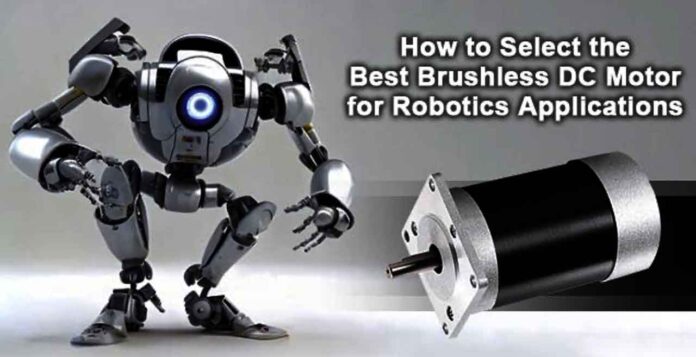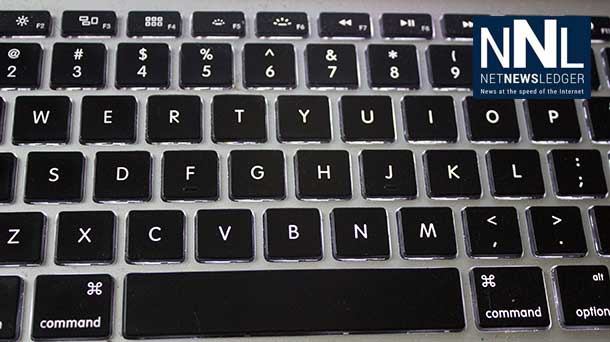The choice of motor is important in robotics, as it influences how well the robot will perform in terms of efficiency and functionality. Brushless DC motors (BLDC) are the ever-efficient and lifetime fixtures that go hand in hand with robotics without smooth operation. BLDC motors used in robotics can generally be categorized as either sensored or sensorless. One would learn, for instance, with regard to selecting the most suitable brushless DC motor for a robot, its application, torque specifications, speed, precision and energy efficiency, and so on.
This piece will guide you throughout the selection process while comparing the differences between sensored and sensorless brushless motors. It will also discuss the benefits offered by brushless dc motors for robotics and assist you in finalizing the motor choice best for your robotic system.
Interpretation of Brushless DC Motors for the Realm of Robotics
However, it must be borne in mind that the primary concepts that underlie brushless direct current motors must be understood first before venturing into the nuts and bolts of how to look for and select the right motors. The traditional brushed motors needed carbon brushes through which electrical energy flows to the rotor. A brushless DC motor differs in that it is one such sort in which electric controllers (ESCs) are installed to switch the direction of the current flow through the motor windings. This absence greatly reduces wear and tear while also improving energy efficiency and extending motor life. As far as robotics is concerned, the most popular are brushless dc motors because they give a very high-to-weight ratio and smooth inactivity when working, all while saving energy.
Brushless DC Motors offer highly precise movement and less mechanical interference; hence, they find applications where very minute position control or speed control is required.
Sensored Brushless Motor versus Sensorless Brushless Motor
Now, once one is done with this basic understanding, he/she chooses the type of brushless DC motor for robotics most suited to his/her needs: the sensored brushless type or the sensorless type. This is the comparison of both types:
Sensored Brushless Motors for Robotics
Sensored brushless motors work with sensors within them, such as an inbuilt Hall-effect sensor, for the position tracking of the rotor. The feedback from the sensors goes back to the controller of the motor and is used for controlling precisely the speed and position.
Advantages of the Sensor-based Brushless Motor applicable to Robotics:
- Unmatched Precision and Control: Sensor motors are in Class A for quality speed control and position accuracy for the smallest increments of motion, making sensor motors (also called sensored motors) a great choice for precision applications such as robotics and drone-type applications.
- Seamless Low-Speed Performance: Sensorless motors are less smooth at low speeds compared to sensored motors, so cogging and jerky motion characteristics are lower, resulting in better low-speed starting and restarting of motion.
- Better Low-Speed Torque: Since sensored brushless motors have sensors for feedback, they are able to provide relatively consistent torque even while operating in the slowest speed ranges. This is a very important property for fine and slow adjustments and is even important for lift capabilities in robotics applications.
- Increased Efficiency: With those properties of reliable motion starting, consistent torque, and low noise levels, sensored motors operate even more efficiently at low speed (and torque) because the ESC, motor controller, can precisely measure the power being delivered to the motor and interpret and react to changes in operation.
- Reduced Stalling Chances: The sensored motors have a significantly lower chance of stalling under low-speed operation. This is a very important feature in any robotics application that eventually limits the movement to operate in a single direction.
Sensorless Brushless Motors
Conversely, a brushless motor without sensors is one that, rather than utilizing feedback sensors to determine the rotor position, derives such a position based on the back electromotive force, or BEMF, produced by the spinning rotor.
Advantages of Sensorless Brushless Motors in Robotics:
- Simplicity and Cost-Effectiveness: As sensorless motors involve no sensor integration, their design is more simplified and incurs lower fabrication costs than arrangements that include any sensors. This renders them a favorable solution for robotic applications that are cost-sensitive or when high precision is not an important design consideration.
- Durability and Reliability: As there are fewer parts for the sensorless motor to fail in the operation, the sensorless motors are more durable. This makes them better suited for designs where durability and maintenance-free operation of up to 24/7 operation are design considerations.
- Better Performance at Higher Speeds: Sensorless motors perform well at higher speeds where rotor positioning is not important. As such, they function best with applications like racing robots and in scenarios that perform multiple fast movements.
- Simpler Electronics: The electronics for sensorless motor control, which is simplified by the absence of sensors, can then be simple, reliable, and in harsh environments or applications with continuous uptime guarantees and no maintenance.
Main Considerations When Choosing the Right Brushless DC Motor for Robotic Applications
- Torque and Speed Requirements:
Torque and speed requirements are crucial when choosing a motor for your robot. If your robot must lift heavy objects or move large components, a torque-generating motor must be selected. If the movement is precise with requirements of torque at low speed, then perhaps a sensored brushless motor is the ideal choice, while a high-speed application operating with more torque might need a sensorless brushless motor.
- Precision and Control:
If the robot is to perform movements needing highly precise positioning, as may be found in robotic arms, drones, or pick-and-place operations, a sensored brushless motor will provide smooth control of such motion accurately. In contrast, a sensorless brushless motor is more applicable in the context of high speeds and contexts requiring less precision in positioning.
- Size and Weight:
The size and weight of a motor should reflect its design intent. Brushless motors come in several different sizes, and the surrounding structure will determine the size of the motor it will require. Choosing a brushless DC motor sized correctly for the application ensures the required performance without inflicting a weight penalty on the robot that would impair its mobility.
- Power Efficiency
Power efficiency for applications in robotics has recently become an important design criterion, and more so for battery-operated robots. In general, sensored brushless motors work well in applications at low speeds, thus extending battery life for robots with longer run times. Energy efficiency, therefore, depends on the motor type. Sensorless motors tend to be more efficient at higher speeds, as they tend to work efficiently at an elevated speed, whereas operational efficiency becomes compromised at a low speed. However, low speeds are generally not very critical for most applications.
- Cost Effectiveness:
Sensorless brushless motors are generally cheaper due to their simpler design. If cost is an issue and high precision is not needed in your robot, a sensorless motor can be a real bargain. But if precision, smooth start-up, and low-speed performance are important, then a sensored brushless motor has a stronger argument for your investment.
- Maintenance and Durability:
The maintenance level required for the motor is another vital consideration. Sensorless brushless motors are usually more robust and relatively maintenance-free in the absence of sensors. On the contrary, sensored brushless motors may require an occasional sensor check-up or replacement.
Applications of Brushless DC Motors in Robotics
- Robotic Arms: Robots working in assembly, packaging, and manufacturing employ sensored brushless motors to provide very precise and consistent torque. As a result, the robot arm functions smoothly and accurately in performing welding, assembly, painting, etc.
- Drones and UAVs: The superlative sensorless brushless motors endow the drone with high-speed drive facilities to give it an effective thrust in fast acceleration and extended periods of static hovering.
- Mobile Robots: Brushless DC motors can be utilized in mobile robots for navigation, object manipulation, and obstacle avoidance. It is an entirely different question as to which of the sensored motors or the sensorless ones shall be recommended based on speed and control requirements, and it depends on the desired functionality of the robot.
- Autonomous Vehicles: In autonomous applications, precision is everything. Sensored brushless motors are perfect for applications requiring fine movement control and fine adjustments, like when traversing over complex terrains or performing soft operations.
Conclusion
Choose a great brushless DC motor for robotics to ensure good performance and reliability for any robotic applications. There are advantages in each case for sensorless or sensored brushless motors depending on the given requirement of the application. Applications demanding accuracy, efficiency, and low speed require sensored brushless motors. For high-speed, low-cost, and rugged conditions, though, specifications on sensorless brushless motors can be considered.
Well-informed decisions about performance optimization should be based on comparisons of the important factors of torque, speed, precision, cost, and maintenance needs. Motors form the foundation of successful robotics development, whether it’s for a robotic arm, a drone, or an autonomous vehicle.







